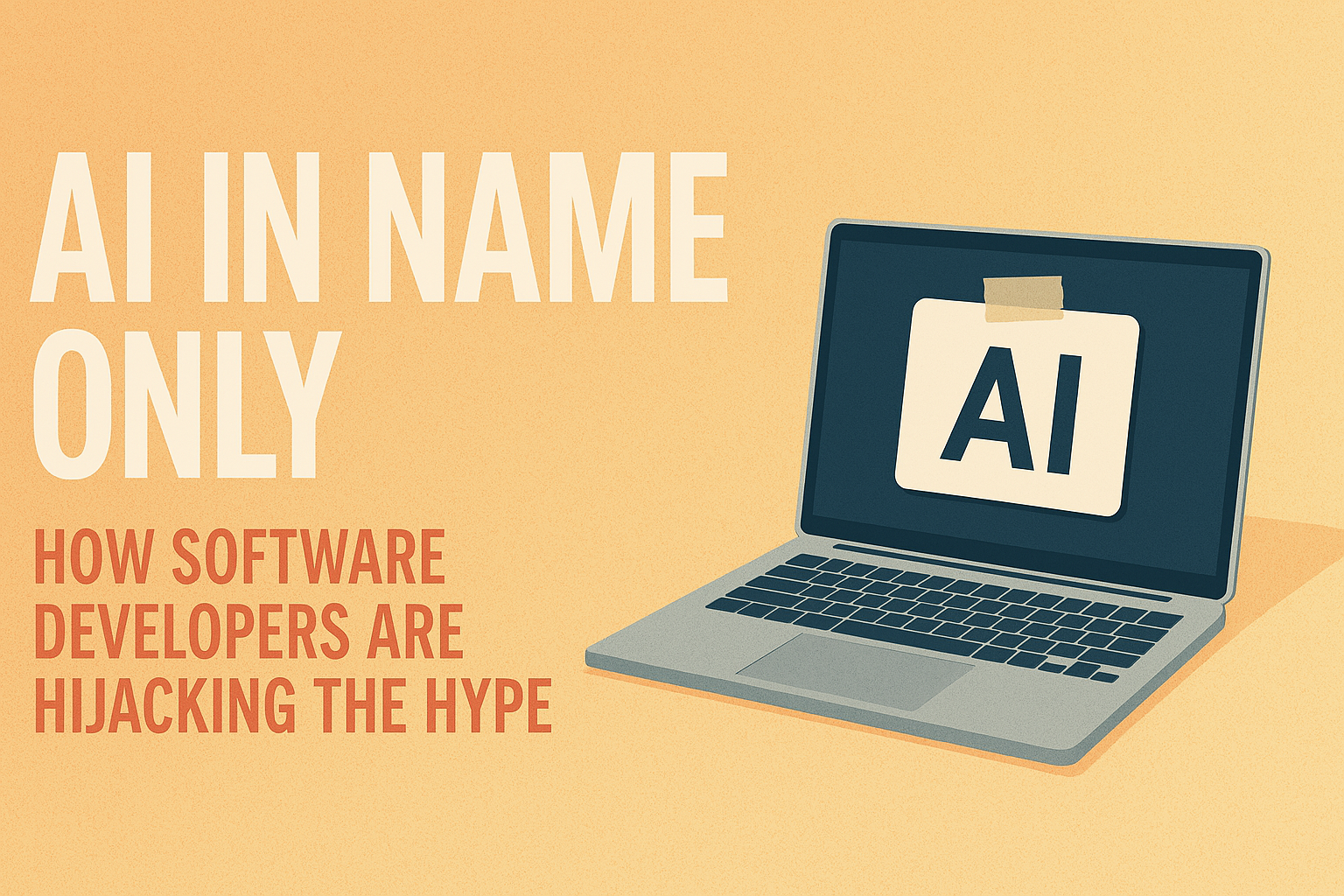


In today's digital economy, a troubling trend has emerged: software developers across industries are increasingly branding their tools as "AI-powered," even when they are not. This widespread mislabeling is not just a marketing tactic; it undermines trust, distorts competition, misleads consumers, and invites regulatory scrutiny. From small startups to major corporations, the rush to capitalise on the AI boom has led to rampant overstatement of AI capabilities. The core issue is that many products advertised as AI are, in fact, traditional software using pre-programmed rules or basic automation—with no real intelligence involved.
The misuse of the term "AI" is problematic for several reasons:
To properly evaluate whether a product genuinely qualifies as AI, it is essential to understand what constitutes true AI software.
What Qualifies as AI Software?
True artificial intelligence software is characterised by its ability to learn, adapt, interpret, and reason. According to the U.S. National Institute of Standards and Technology (NIST), an AI system is one that can make predictions, recommendations, or decisions based on input data, without being explicitly programmed for every outcome. The European Union's AI Act echoes this, defining AI as machine-based systems capable of inferring how to achieve objectives from input data and operating with varying levels of autonomy.
Key hallmarks of legitimate AI systems include:
These technologies exhibit a degree of intelligence by recognising patterns, generalising from data, and refining outputs over time.
What is NOT AI
Despite the hype, most software marketed as "AI-powered" does not meet the threshold of artificial intelligence. Common examples of non-AI solutions misrepresented as AI include:
These systems do not learn or improve over time. If software behaves the same tomorrow as it does today—unless manually updated—it is not AI.
Examples of Misleading AI Claims
Several companies have come under fire for exaggerating their AI credentials:
These examples highlight the discrepancy between marketing and reality, often leading to consumer disappointment or legal action.
Ethical and Regulatory Implications
The overuse of "AI" in branding poses ethical challenges and legal risks:
In response, regulators are reinforcing that existing advertising and fraud laws fully apply to AI. The EU's AI Act and standards from bodies like ISO and IEEE are helping set clearer definitions to combat AI washing.
Conclusion: Call for Integrity in AI Claims
Businesses must resist the temptation to slap an "AI" label on traditional software. The term must be reserved for systems that genuinely exhibit learning, reasoning, or intelligent behaviour. Mislabeling not only erodes trust and invites legal trouble but also damages the broader AI ecosystem. Companies that build or use AI should accurately disclose what their technology does—and just as importantly, what it doesn't. This clarity is essential to ensuring that AI continues to deliver real value and innovation in a world increasingly cluttered by misleading claims.
